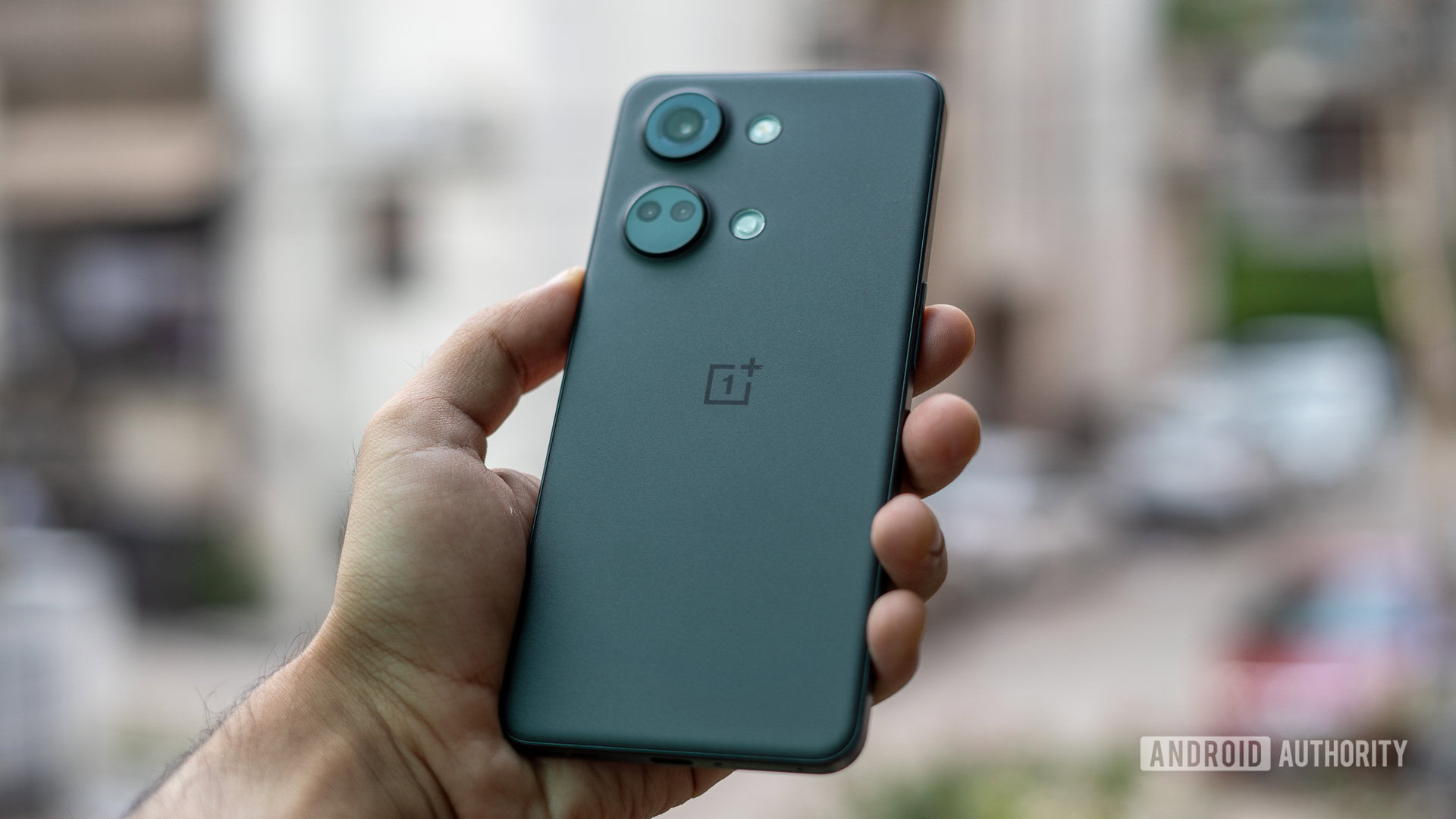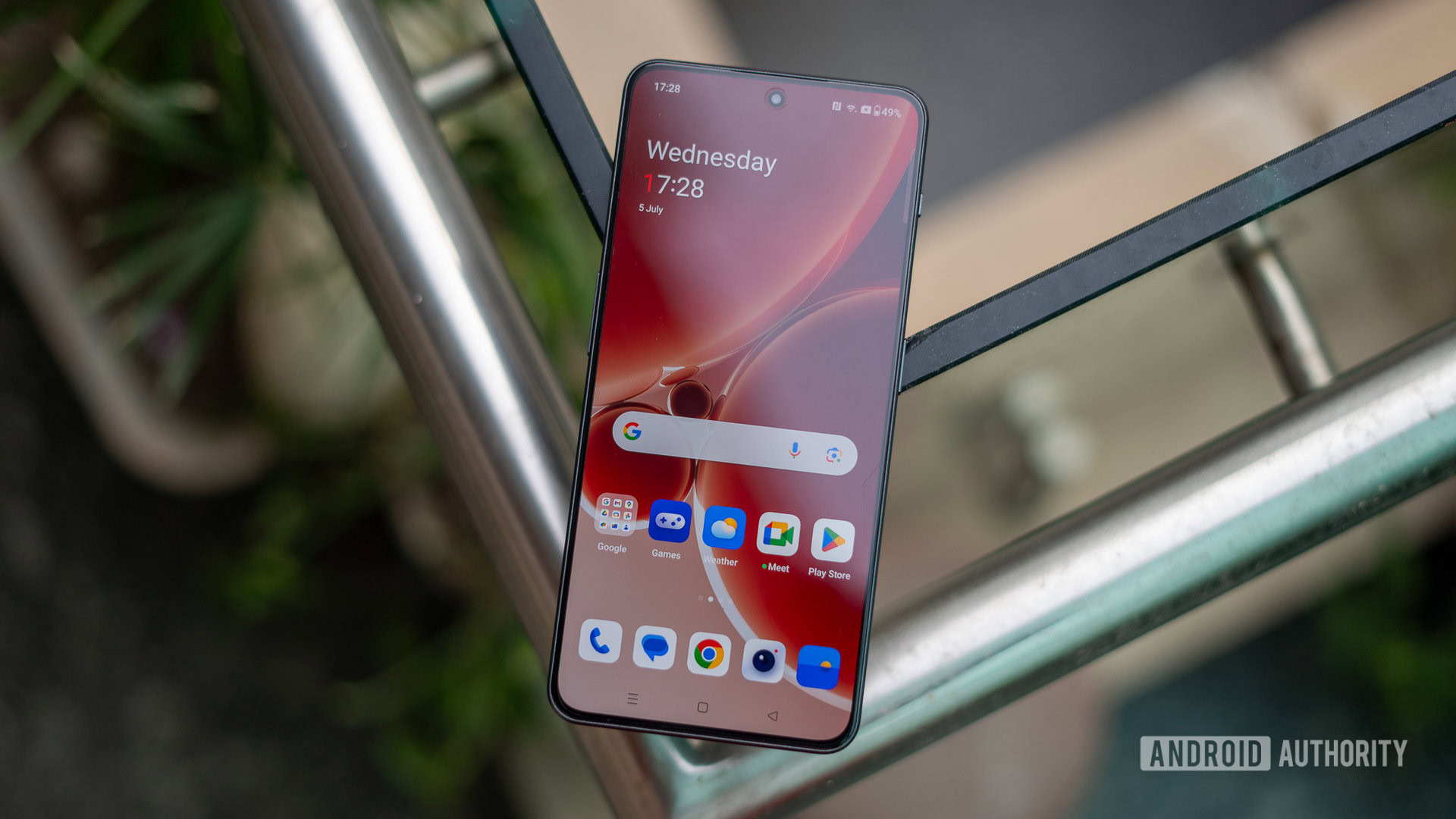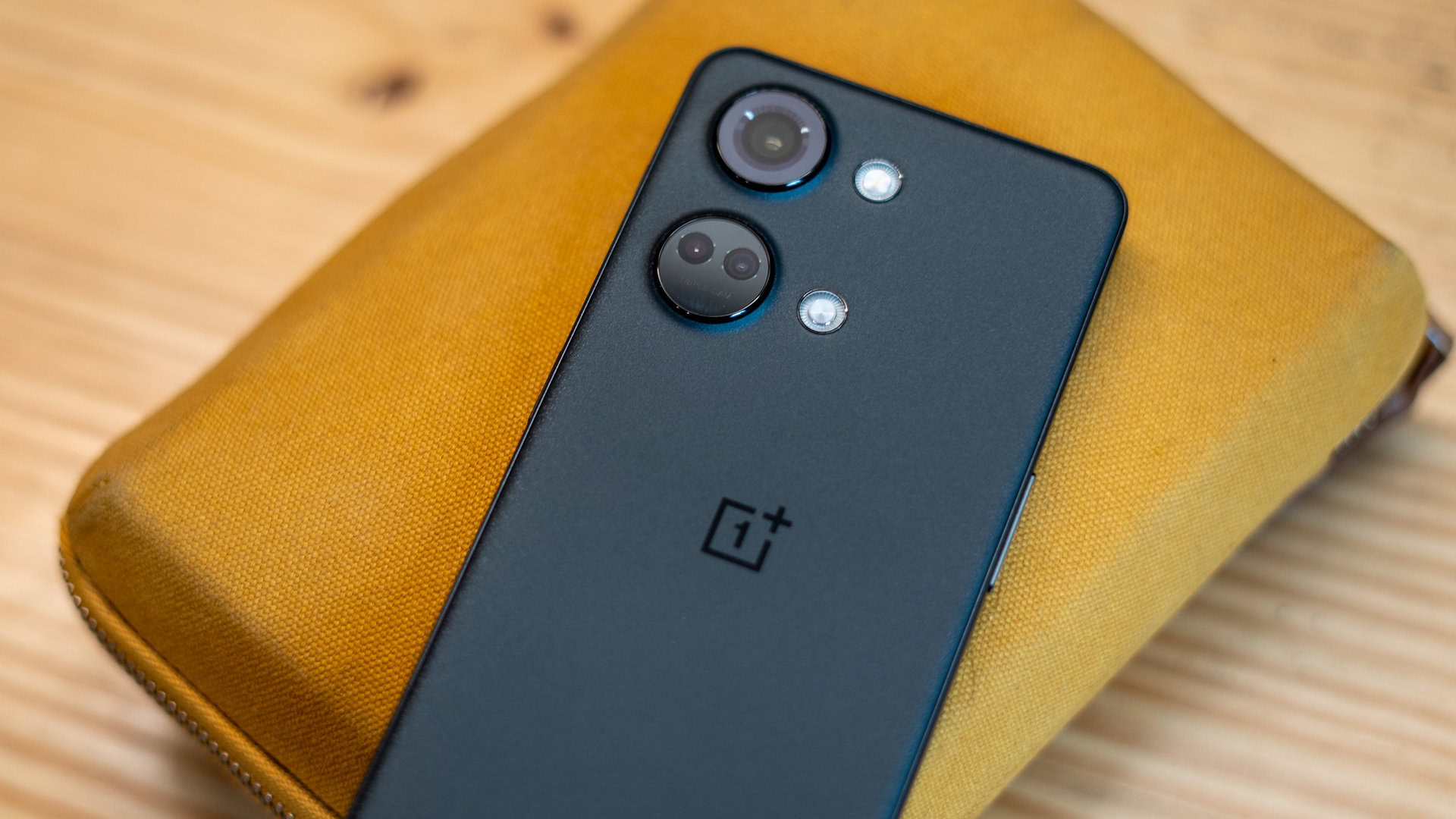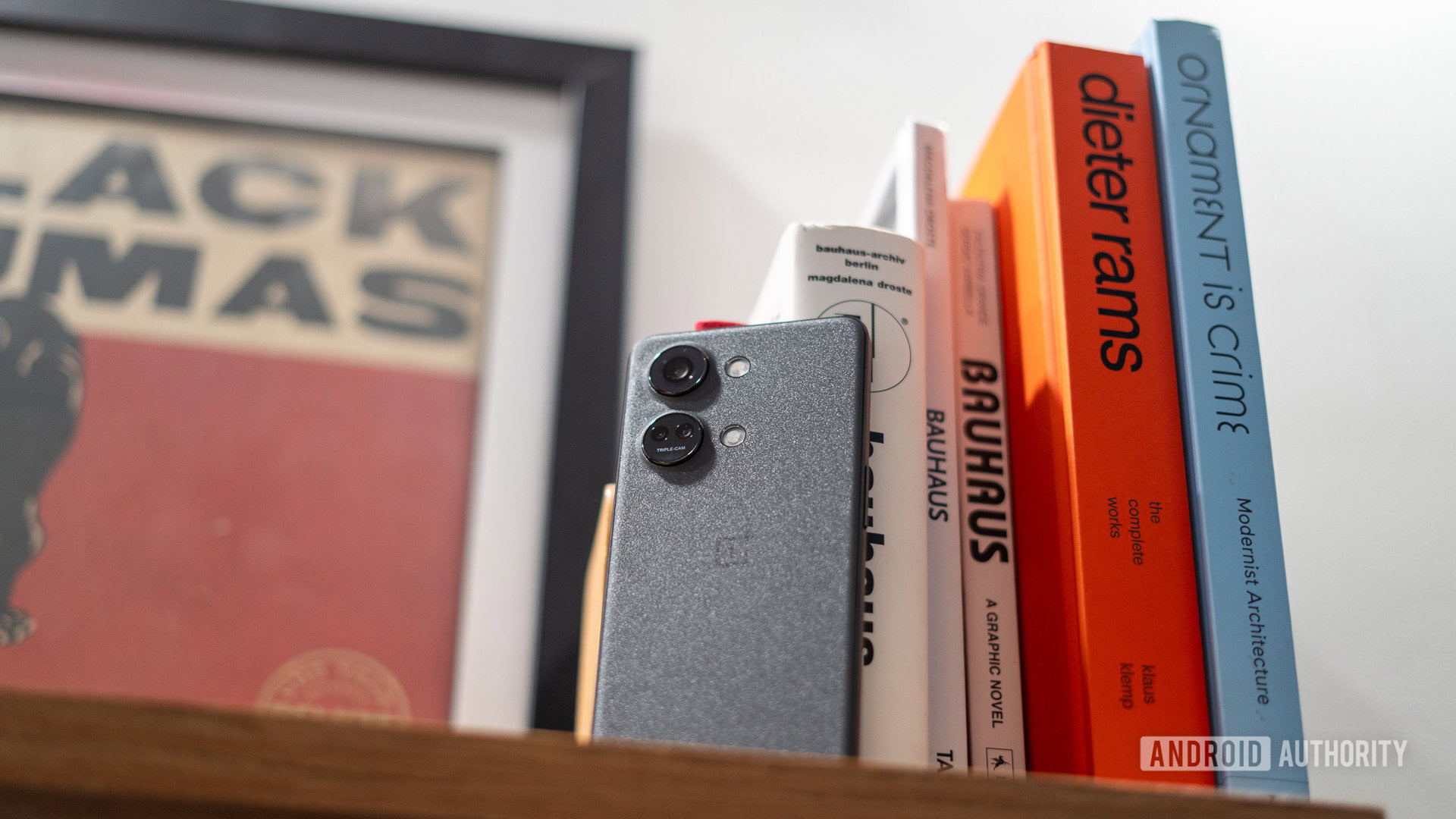Affiliate links on Android Authority may earn us a commission. Learn more.


OnePlus Nord 3 review: Should you buy it?
Published onJuly 28, 2023

OnePlus Nord 3
MSRP: €499.00
What we like
What we don't like

OnePlus Nord 3
OnePlus Nord 3 review: At a glance
- What is it? The OnePlus Nord 3 is the latest in the company's mid-range lineup of Android phones outside of the US. It packs a MediaTek Dimensity 9000 chipset, with up to 16GB of RAM and a 120Hz 6.74-inch display. The OnePlus Nord 3 improves upon the OnePlus Nord 2 and OnePlus Nord 2T's battery with a 5,000mAh cell. Charging speeds, too, are sufficiently speedy at 80W. The phone is priced higher than the OnePlus Nord 2T but offers improved performance, a flagship-grade camera sensor, and a larger display for the money.
- What is the price? The OnePlus Nord 3 starts at €499 (~$555) in selected European markets, and will be sold in the UK for £499. It is also on sale in India starting at Rs. 33,999 (~$412).
- Where can you buy it? The phone is available for sale on Amazon and OnePlus' website in selected regions, but will not be sold in the US.
- How did we test it? I tested the OnePlus Nord 3 for six days. OnePlus supplied the review unit.
- Is it worth it? The OnePlus Nord 3 delivers on all the core tenets of a good affordable phone, like performance, build quality, and a rather good camera experience for the price. A solid upgrade over the rapidly aging OnePlus Nord 2T, the OnePlus Nord 3 competes with the very best in the saturated mid-range smartphone segment. It doesn't necessarily pack the right feature set to make it an all-out winner, but there's merit in being a reliable and performant device.
Should you buy the OnePlus Nord 3?

The OnePlus Nord 3 is a predictable, albeit welcome upgrade over the company’s 2022 iteration — the OnePlus Nord 2T. Unlike the whatever-is-in-the-parts-bin approach of prior years, OnePlus has made an effort to bring the Nord 3 in line with expectations from a 2023 mid-ranger. In fact, the Nord 3 is one of the more significant updates to the OnePlus Nord line in recent years and features improvements in all the necessary places. OnePlus is keeping it competitive by upgrading the primary camera sensor to the same flagship module as the OnePlus 11. The phone is consistent in its premium mid-range leanings, be it through the choice of processor or the quality of construction. Glancing at the spec sheet might point towards a relatively boring smartphone, but if our experience is anything to go by, the OnePlus Nord 3 makes up for it with consistency.
That’s not to say that the OnePlus Nord 3 should be dismissed as another generic mid-ranger. The rather obnoxious camera module from the OnePlus Nord 2T is gone, and the Nord 3 employs a much simpler and, resultingly, sophisticated design. The glass back comes in glossy and matte finishes, and the squared-off mid-frame is coated in an equally pleasing matte finish for better grip. It’ll survive a splash or two thanks to its IP54 rating, though it won’t survive immersion in water like the Samsung Galaxy A54 5G and Pixel 7a. You will, however, find niceties like the quintessential OnePlus alert slider and an IR blaster at the top that can control TVs and other appliances.
The OnePlus Nord 3 lacks the flash of some alternatives, but makes up for it with a consistently good experience.
The front is where you’ll observe more dramatic changes. The screen size is drastically larger at 6.74 inches, with an equivalent increase in resolution to 1.5K. The original OnePlus Nord was amongst the first phones to bring a high refresh rate panel to the mid-range segment. This time, the Nord 3 is upgrading the refresh rate to 120Hz to match the competition.
It’s no LTPO panel; the lowest you can expect from the screen is a 40Hz refresh rate to conserve battery life. That said, I’ve had no gripes with the display quality. I found it perfectly visible both under bright sunlight and overcast skies. Out of the box, color accuracy veers on the side of oversaturation. It’s not garish; in fact, I quite enjoyed the punchy colors. However, switching to a more neutral tone is a cinch using one of the built-in pro modes. HDR support has been a bit hit or miss on recent OnePlus hardware, but I’m happy to report that the Nord 3 does well here. The Grand Tour, in all its HDR glory, looked rather fantastic, but it made the imbalanced stereo speaker output very evident.
Of course, the biggest upgrade here is in the chipset. Excellent performance for your money is, for better or worse, the company’s schtick, and the MediaTek Dimensity 9000 does not disappoint. There’s up to 16GB of RAM to back up that performance, but more importantly, Oxygen OS finally behaves well with how it handles background apps. I didn’t encounter errant force closes during my week with the phone. Similarly, games work just as well as you’d hope, and I spent more time than I should have testing out Call of Duty Mobile cranked up to the max. After a few intense sessions, the phone got noticeably warm to the touch, but I didn’t observe any thermal throttling when playing indoors. The phone cools down plenty fast as well.
Since this is a OnePlus phone, there are a few errant bugs. This was most evident in the typing experience, where I consistently observed a hint of latency. It wasn’t enough to hamper typing, but it did take me a second or two to get used to it. I’d expect OnePlus to fix this with a post-release bug fix. As for updates, the OnePlus Nord 3 is promised three major upgrades and four years of security patches, which is a solid enough commitment at this price tier.
As with most OnePlus phones, some bugs are to be expected. This time, there's some latency while typing and higher than expected battery drain.
OnePlus is sticking to the very common trifecta of a high-resolution primary camera, a middling 8MP ultrawide shooter, and a practically useless 2MP sensor. Cribbing from the OnePlus 11’s feature pile, the Nord 3 packs the same 50MP IMX890 sensor we saw on the flagship and the more recent Nothing Phone 2. While it skips out on the flagship’s Hasselblad tuning, that’s no big miss. OnePlus has opted for a slightly punchy color profile and does a rather good job of retaining fine detail and textures. The noise reduction algorithms aren’t particularly aggressive, and you don’t have any visible smearing, as we’ve seen on past OnePlus phones. I was particularly impressed by the sharpness in detail and excellent control over highlights in HDR shots. The portrait mode has also been upgraded, and the phone excels at creating a realistic depth-of-field effect. The shutter lag, however, disappoints, and capturing a subject in motion is generally an exercise in frustration.

Compared to the primary camera, the ultrawide shooter is a noticeable downgrade. The OnePlus Nord does well at retaining sharpness and detail, but the aggressive noise levels are an obvious tradeoff. The macro camera, meanwhile, is outright terrible due to the low resolution. You can take a look at full-resolution OnePlus Nord 3 camera samples by clicking through to our Google Drive link.
If you’re an avid smartphone videographer, the OnePlus Nord 3 won’t be your first choice. While it offers up to 60fps recording, there’s no stabilization at all at 4K resolutions. Dropping that down to 1080p improves the situation, but the flipside is an errant red cast. The selfie camera is also limited to 1080p at just 30fps.
I had high expectations from the 5,000mAh battery on the OnePlus Nord 3, which didn’t exactly play out. My day would usually start with catching up on social media and popping on a playlist on Spotify. I also spent a lot of time reviewing my emails, browsing RSS feeds on Readwise, and hours of music streaming. Finally, I’d get in several Call of Duty Mobile rounds to wrap up the day. Most days, I had to plug the OnePlus Nord 3 into the charger before I went to bed. Sure, my usage was more aggressive than most owing to the smartphone testing process, but I rarely, if ever, crossed six hours of screen time. Thankfully, charging the phone is quick at 80W, which takes about 35 minutes to take it to 100% from scratch.


What are the best OnePlus Nord 3 alternatives?

The OnePlus Nord 3 commands a higher price tag than last year’s OnePlus Nord 2T but nets you a lot more hardware for your buck. However, the segment is crowded with great alternatives.
- Google Pixel 7a ($477 at Amazon): Google’s budget-minded phone brings much of what we love about the flagship to a much more affordable price point. It’s even got the same Tensor G2 chipset, which isn’t quite as powerful as the OnePlus Nord 3’s chip, but does provide some AI features that are exclusive to Pixel. While the Pixel 7a‘s camera sensors get a switch up to include a 64MP primary and 13MP ultrawide, picture quality doesn’t stray too far thanks to the excellent software processing.
- Samsung Galaxy A54 5G ($379.5 at Amazon): The Samsung A54 5G is a good Nord 3 alternative for those who care less about performance and want a good all-around mid-ranger. The phone offers an IP67 rating, a great looking 6.4-inch 120Hz Super AMOLED display, and an IP67 rating, plus an extensive software update policy that covers the phone for four years of Android OS updates.
- Nothing Phone 1 (£399.99 at Amazon): Finally, you might also want to consider the Nothing Phone 1. The Snapdragon 778G Plus processor here doesn’t have nearly the same amount of power. But what the Nothing Phone 1 lacks in power, it makes up for with style and an extremely distinctive LED-based notification system. The phone also has an IP53 rating and additions like wireless charging support. The Nothing Phone 2 is a sharper upgrade, but the Phone 1 is much closer in price to the OnePlus Nord 3.
- Poco F5 ($722 at AliExpress): Prefer MIUI? The Poco F5 might be right up your alley. The phone prioritizes performance with its Snapdragon 7 Plus Gen 2 chipset, a large 5,000mAh battery, and quick 67W charging. It’s even got a surprisingly capable 64MP primary camera. However, you’ll have to compromise with the sheer amount of bloatware onboard and the lackluster secondary cameras.
OnePlus Nord 3 specs
| OnePlus Nord 3 Specs | |
|---|---|
Display | 6.74-inch Fluid AMOLED 2,772 x 1,240 resolution at 390ppi 20:9 aspect ratio 120Hz display refresh rate Dragontrail Glass |
Processor | MediaTek Dimensity 9000 |
GPU | Mali-G710 MC10 |
RAM | 8GB or 16GB LPDDR5X |
Storage | 128GB or 256GB UFS 3.1 |
Power | 5,000mAh battery 80W SUPERVOOC charging No wireless charging |
Cameras | Rear: - 50MP main (1.0µm, ƒ/1.88, OIS) - 8MP ultrawide (112-degree FoV, ƒ/2.22, EIS) - 2MP macro (ƒ/2.4) Front: - 32MP single (0.8µm, ƒ/2.45, EIS) |
Video | 4K at 60FPS recording 1080p at 30/60FPS recording 720p at 30/60FPS recording Slow-motion/time-lapse: 1080p/120FPS and 720p/240FPS |
Audio | Dual stereo speaker No 3.5mm headphone port Bluetooth 5.2 Support for aptX & aptX HD & LDAC & AAC |
Connectivity (India) | Wi-Fi: 802.11 a/b/g/n/ac/ax, 2.4G/5G, 2x2 MIMO Bluetooth: 5.3 NFC: Supported LTE: 4×4 MIMO, support up to DL Cat 18/UL Cat 13 (1.2Gbps / 150Mbps), depending on carrier support GSM: GSM850, GSM900, DCS1800, PCS1900 WCDMA: B1/2/4/5/8/19 LTE-B: 1/2/3/4/5/7/8/12/17/18/19/20/26/34/38/39/40/41 NR NSA: N41, N78, N40, N79 NR SA: N41, N78, N28A, N1, N3, N79, N40 |
Ports | USB-C port (2.0) Dual nano-SIM slot No 3.5mm headphone port No microSD card slot |
Software | Android 13 Skinned with Oxygen OS 13.1 |
Dimensions and weight | 162 x 75.1 x 8.2mm 193g IP54 rating |
Colors | Misty Green, Tempest Grey |
In the box | - Phone - Warp Charge 80 wall adapter - Warp USB-C cable - Phone case - Screen protector (pre-applied) - SIM tray ejector |
OnePlus Nord 3 review: FAQ
No, the OnePlus Nord 3 does not support wireless charging.
Yes, the OnePlus Nord 3 can make calls over Wi-Fi.
No, the OnePlus Nord 3 does not have eSIM support.
No, the OnePlus Nord 3 does not have a headphone jack.
Yes, the OnePlus Nord 3 is a dual-SIM phone with support for 5G on both slots.
No, the OnePlus Nord 3 does not have an expandable memory slot. Buyers have a choice between 128GB or 256GB of storage.